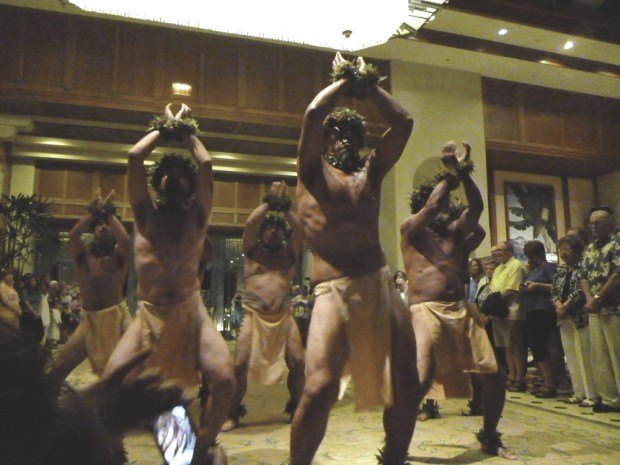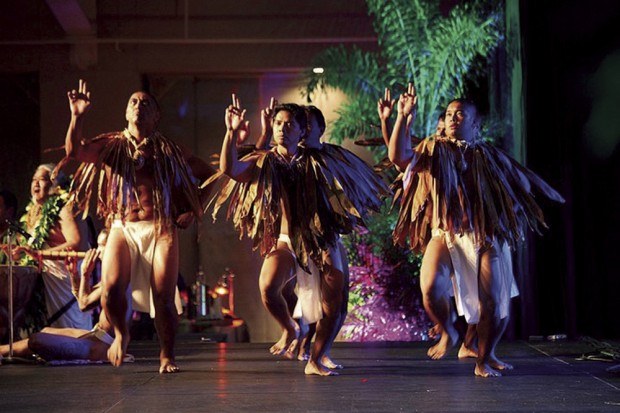The lobby of the Hyatt in Poi‘pu was jammed with people eager to see the powerful male hula of the Na Kane O Keoneloa. Leilani Rivera Low, herself a legendary hula dancer was fabulous onstage at the Sea View Terrace
The lobby of the Hyatt in Poi‘pu was jammed with people eager to see the powerful male hula of the Na Kane O Keoneloa. Leilani Rivera Low, herself a legendary hula dancer was fabulous onstage at the Sea View Terrace singing Hawaiian favorites, and the evening continued with an intense performance of Na Kane O Keoneloa to help celebrate Prince Kuhio’s birthday.
The dance troupe has revived male hula dances from more than 100 years ago. Dance veterans say the number of men trying to preserve one of Hawai‘i’s more storied and treasured traditions has been dropping for years following a revival in the 1970s.
Hula dancing is a complex art form, and there are many hand motions used to represent the words in a song or chant. Hand movements can signify aspects of nature, such as the swaying of a tree in the breeze or a wave in the ocean, or a feeling or emotion, such as fondness or yearning. Foot and hip movements often pull from a basic library of steps.
While the first mention of hula in recorded Hawaiian history is of a woman, men performed the ritual temple dances. But after the monarchy was overthrown in 1893, hula went underground and men stopped dancing.
Ancient hula, as performed before Western encounters with Hawai‘i, is called kahiko. It is accompanied by chants and traditional instruments as it was earlier this month at the Hyatt. The Na Kane O Keoneloa all male hula helps share part of the culture of Hawai‘i through its performances.
The troupe regularly performs at the Grand Hyatt Resort in Po‘ipu, but for this celebration the members incorporated drumming with the chants and dance.
The Na Kane O Keoneloa is the only all male hula group on Kaua‘i keeping this tradition alive.




